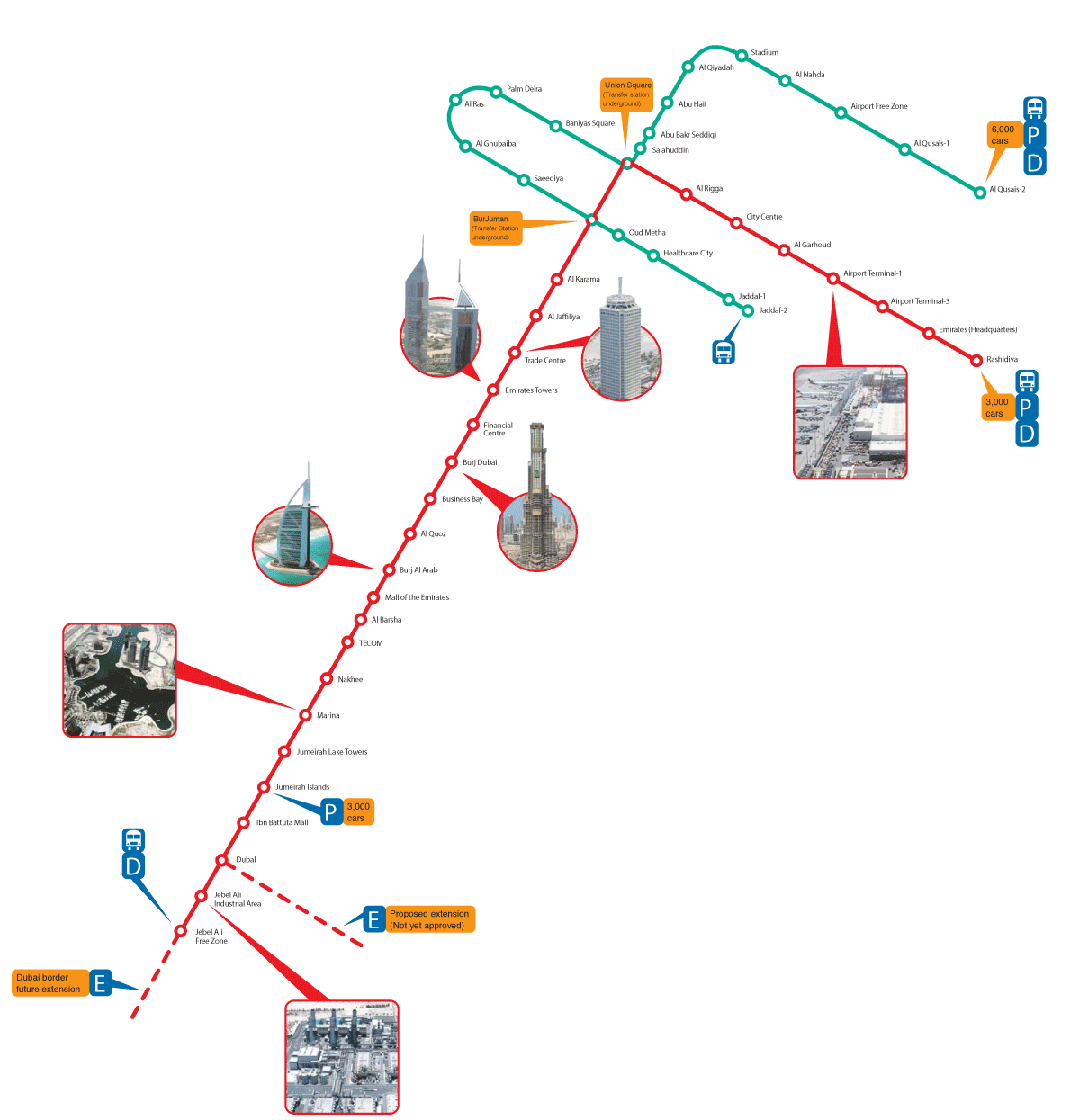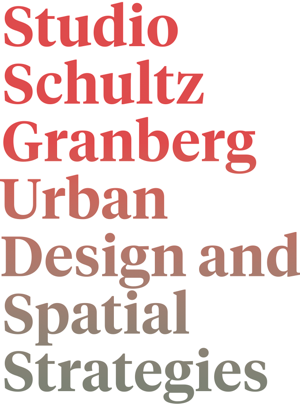Dubai Metrozone
Stadtforschung / Ausstellung

Dubai ist als Stadt der Superlative bekannt. In rasantem Wachstum entstanden vor der Finanzkrise 2008 unzählige Immobilienprojekte, die sich expansiv entlang der Küste und in die Wüste entwickelten. 2005 entstand mit dem Bau der Metro Dubai eines der größten Infrastrukturprojekte am Persischen Golf. Dubai Metrozone untersuchte die möglichen Potenziale für zukünftige Transformationen.
Dubai ist als Hauptstadt der Superlative bekannt: Das höchste freistehende Hotel der Welt, die größten künstlichen Inseln, das größte Einkaufszentrum, der mit 828 Metern höchste Turm der Welt (Burj Khalifa) … die Stadt wächst rasant. In den letzten Jahrzehnten hat sich die Einwohnerzahl versechsfacht. Es etablierte sich ein expansiver Urbanismus konkurrierender Masterpläne, die nach Einzigartigkeit auf dem Schlachtfeld ikonischer Architektur streben. Jedes Projekt ist eine für sich stehende, isolierte Themenwelt.
Als Infrastrukturprojekt bietet der Bau der Metro Dubai neue Perspektiven für alles, was zuvor getan wurde: Die Immobilienwerte werden entlang der Stationen steigen. Verdichtung und Intensivierung eröffnen Gestaltungsmöglichkeiten für neue städtische Typologien. Eine neue Art von Akteur wird erscheinen: der Fußgänger, der nicht mehr nur allein auf das Auto angewiesen ist. Vielleicht wird die Metro der Ausgangspunkt für neue Dynamiken und soziale Interaktionen in einem lebendigen offenen Raum – der Metrozone.
Die Ergebnisse wurden Teil einer spekulativen Kartierung, der 4m großen Karte „Dubai Metrozone“. Die sich entwickelnde Infrastruktur zeigt Entwicklungsoptionen für neue städtische Typologien. Im Rahmen der Internationalen Architekturbiennale Rotterdam 2009 wurde der Beitrag bei den Parallel Cases ausgestellt.
Ausstellung auf den Parallel Cases der Internationalen Architekturbiennale in Rotterdam, IABR 2009
Team: Joachim Schultz-Granberg, Alexandra Böcker, Julian Münzel, Andreas Rauch, David Serrao, Jenny Wahren, Andrea Wycisk
Partner: Rebal Knayzeh (Fotos), Adina Hempel


WHEN I WAS SIX … I fell and fractured my arm and dislocated my elbow. I was rushed to the hospital where the next thing I remember is waking up with a dry mouth and a cast on my arm. Now I boast a 14-stitch scar on my left arm. Dubai will soon boast its own scar, the result of an extensive operation that requires deep incisions, a broad cast and that hopefully heals quick enough to rectify the damage that necessitated this operation in the first place. The scar for all to see is the elevated track of the new Metro Dubai.
The streets of Dubai today are the epitome of temporary solutions, temporary diversions on its highways, temporary signage temporary traffic lights. Look a little further and you would realize that Dubai’s entire population is there on temporary basis. That may be why no one cares to leave his or her mark. There is no graffiti, no public art, there is no public civic space to begin with. (…)
The changes that we may anticipate are numerous, and the repercussions are hard to predict. No one from Le Corbusier, to Jane Jacobs, to Lewis Mumford with their diametrically opposed yet similarly western theories can predict the outcome of this “old” mode of transportation.
Will rent in the areas closest to the stations rise? Or will the inhabitants rush to quieter locations. Will people actually use it and if they do will they accept sharing the same car with others from every rank and walk of life? Will this new “easy” mode of transportation bring the much feared, much hidden face of Dubai, the swarms of Asian laborers into the city on the weekends? This is the ultimate test of public interaction. It is easy for car drivers to pass by the many labour transportation buses on the congested highways and complain about the ogling eyes of many of the workers. Would the same people accept sharing the same bench on the train with the workers?
Rebal Knayzeh (Text und Fotodokumentation des Baus der Metro Dubai)










verwandt und weiterführend
Xeritown Masterplan in Dubai
